Red Deer Rut on Rum
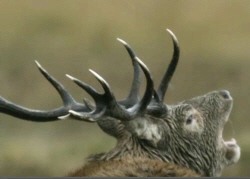
Autumn is turning out to be very wet, this year, in the inner Hebrides. On the Isle of Rum 60 miles north of Oronsay this is having some surprising consequences. At this time of year, female red deer called hinds should be coming into season triggering the annual meeting contest known as the rut. But, the wet weather has set everything back.
So, although the red deer stags are pumped up with testosterone and desperate to mate, not a single hind is ready for them.
Now, as the weather finally improves things are about to change. Astonishingly though, each red deer hind will only be in season for one hour. If the red deer stags are to mate with them, they’ll need to be in exactly the right place at the right moment. From now on, the tension will build.
Hooper Swan
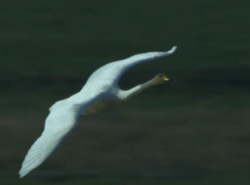
Nothing defines the weather of the inner Hebrides more than the wind. Gusts of 60 mph are common in summer and now at the turning point of the year they can reach 100 mph. Now, at the beginning of autumn, the winds turn to the north bringing long-distance travellers to Islay’s Loch Gruinard.
Hooper Swans. They’ve flown direct from their breeding grounds in Iceland nearly 1000 km away. The youngsters in these families have made the journey for the first time. Their feet haven’t touched the ground since they left Iceland more than 40 hours ago.
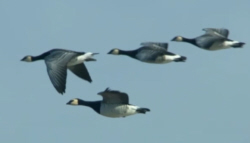
Islay’s the very limit of what they can manage in a single flight. They need to rest. The Swans are in transit, heading for wintering grounds further South. But, their travelling companions will stay much longer.
Barnacle Geese
Barnacle Geese. More than 40,000 of these geese have travelled from Greenland to spend autumn and winter on the rich farmland here. The island offers them a haven. There are no ground predators like foxes here. But, they seem edgy. It’s a false alarm. A buzzard is too small to pose a threat to these geese.
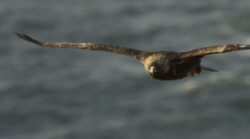
But, bigger birds of prey will hunt them and this is an island of Eagles.
There are at least 10 pairs of golden eagles on Islay and recently, the even larger white-tailed eagle has taken up residence here. The flocks of geese are a great potential food supply. They’ll need to be on their guard at all times.
High above the cliffs on the south coast of Islay stands a lonely monument. It commemorates the sinking of two American troop ships in 1918. The Tuscania and Otranto, 600 lives were lost in these disasters as men were drowned or dashed on the jagged rocks.
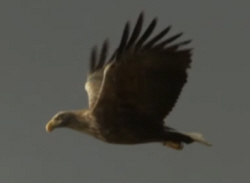
These treacherous waters have claimed many victims over the years. There are hundreds of wrecks around Islay. But, new life has sprung from these tragedies. The rusting ribs and hulls provide a home for many plants and animals. They are man-made reefs. Crabs take up residence in the nooks and crannies while shoals of Pollock patrol the ship’s skeleton. The wreck is a perfect home for these relatives of the cod.
They are predators, searching for smaller fish to ambush in the decaying chambers of the ships. Wrasse are quick to rush for cover. The decaying plates of the stern, pulsate with life. Hundreds of an anemonies sit alongside the jewel like coral. Barnacles cover the hull of the ship. These tiny relatives of crabs and lobsters beat their feathery-legs to draw passing plankton into their shells. Being anchored to the wreck gives them extra height above the seabed and access to more food. Everywhere new life springs from death and destruction. These ferocious seas nurture as well as destroy.
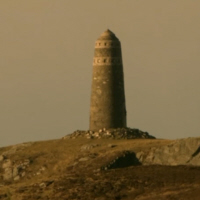
Dawn breaks on Islay. Barnacle geese are roosting on the mud flats of Loch Indaal, still recovering from their marathon flight. But, they must feed and as the sun rises the flocks will spread out across the island.
White-Tailed Eagle
There are killers about. White-tailed eagles. But, with so many geese in the air, the Eagles can’t single one out. Hooded crows join the melee. There’s been a kill. One of the Eagles has brought a goose down. They fight over the spoils on the rapidly emptying mudflats.
In Scots Gaelic, October is called the roaring time. On Rum, the first hinds are finally coming into season. Their scent pulls in stags from miles around. At last, the rut can begin. But, the rules of this mating game are complex. It’s not won by brute force and muscle alone. The hinds are attracted by the deepest and most powerful roars, but they also need males to treat them sensitively or they’ll choose a different stag. The master of Rum’s Kilmory Glenn holds the best patch with the lushest grass. It’s attracted a large group of hinds. Across the river, which marks the border of the master’s terrain, another stag watches and waits.
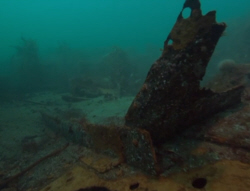
He’s older, this year’s rut may be his last. The older red deer stag’s side of the river is rougher, with less grass. It’s harder for him to hang onto the hinds. Attracted by the master’s roar and the sweeter grazing across the water they just keep slipping away. For the old stag to mate he must cross the river and fight the master.
If the risk pays off and he wins he could father many calves.
Staying put means he’ll probably father none. Another hind slips away across the river. But, the old stag chooses not to follow her. It could be a wise decision. The master is constantly fighting off other stags and will start to tire. The older stag will stand a better chance of winning if he waits for exactly the right moment.
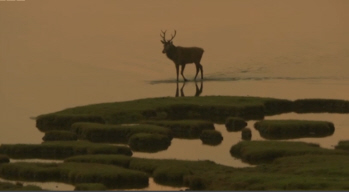
The geese will tell it in autumn, runs an old Gaelic saying, and now the whole of Islay rings with their cries. They’ve found an unexpected treat in the form of barley. This autumn has been so wet the farmers couldn’t harvest the whole crop, so some of the grain destined for the whisky distilleries is now feeding the birds.
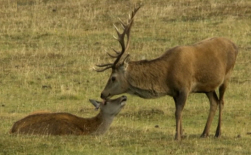
The lush farmland of Islay is the reason the island is so special for wildlife. It’s the best place in the Hebrides for raising cattle and sheep and because most of the farming here is gentle and a low-intensity there is plenty of space and surplus food for wildlife.
Flocks of twight, declining in the rest of Britain, make a great living from what gets spilt and left over. Mid-autumn is a key point in the sheep farmer’s year as the flocks head for the October stock sales. Buyers travel from across Britain to bid for the fattened lambs and despite all the rain they are looking in prime condition.
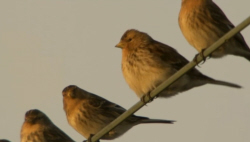
It’s a great social occasion for the island too, there’s a real buzz. Even the smallest lamb always finds a buyer. The celebrations will carry on deep into the night.
At dawn on the Isle of Rum, the old red deer stag is making his move. A hind has come into season on the master’s side of the river, he’s finally decided to cross into enemy territory. The master is fighting another stag on the hill, this could be the old stag’s chance, but his decision may come with a heavy cost. If he’s injured he may not survive the winter. This may be his last chance to overthrow his rival and breed.
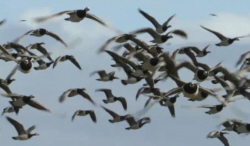
He’s staking everything on this challenge. The master sees off the stag on the hill but, he’s heard the old stags roars. Fights can be won or lost by the tiniest error, so every clash and parry is critical. The old stag is pushed back, the master has the advantage. The old red deer stag gives it his last supreme effort, an antler in the eye would deter many stags, but not the master. The master moves in to attack, but he slips and the old stag pushes home his advantage, goring the master deeply in his side.
Badly wounded, the master retreats. It’s all over for him. There is a new ruler in Kilmory glen and he’s won all the hinds. The defeated master withdraws to recover. He’ll have to wait until next year to try again.
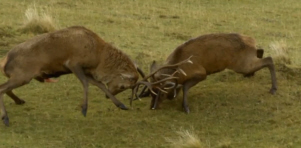
It’s been the wettest, stormiest autumn for many years in the inner Hebrides. But, life here is adaptable and resilient. It has to be, in any place where the only certainty is constant change. On Islay, the Hooper Swans are restless. By now, they would normally be in their wintering grounds. But, the unharvested barley has kept him here through the whole autumn. But, now they are leaving climbing into the slate-grey sky. The wheel of the seasons is turning, soon autumn will become winter bringing more challenges to the animals of these islands on the edge.
External Links
Understand the Red Deer Rut - Discover Wildlife
